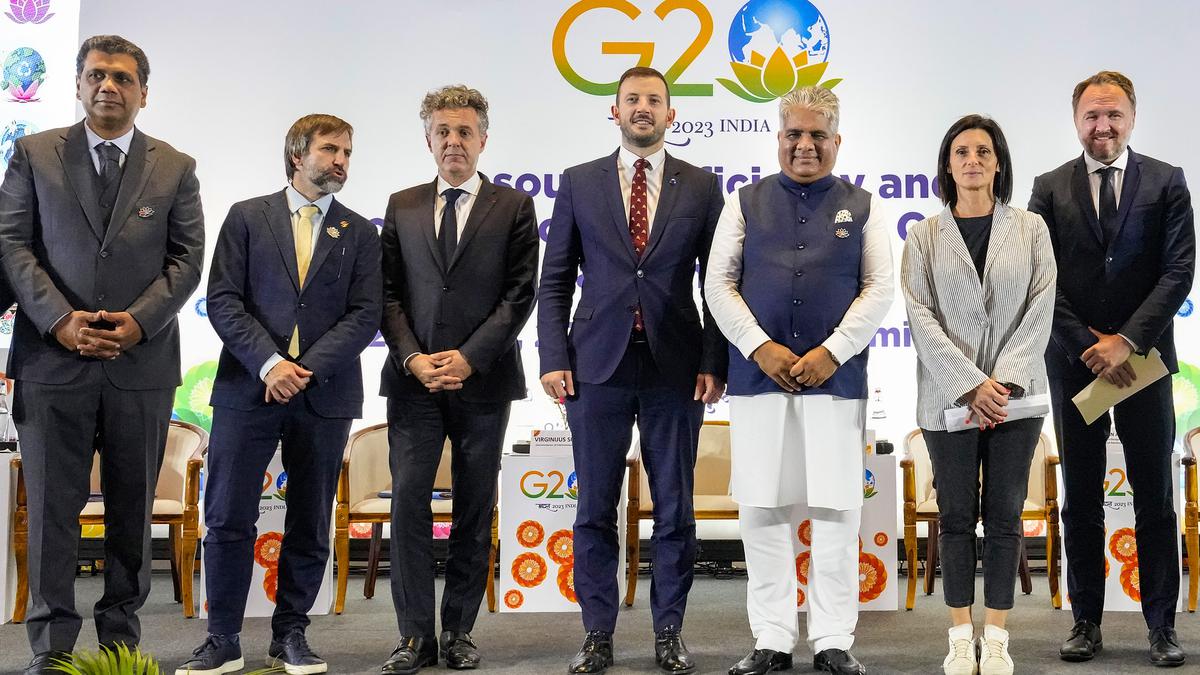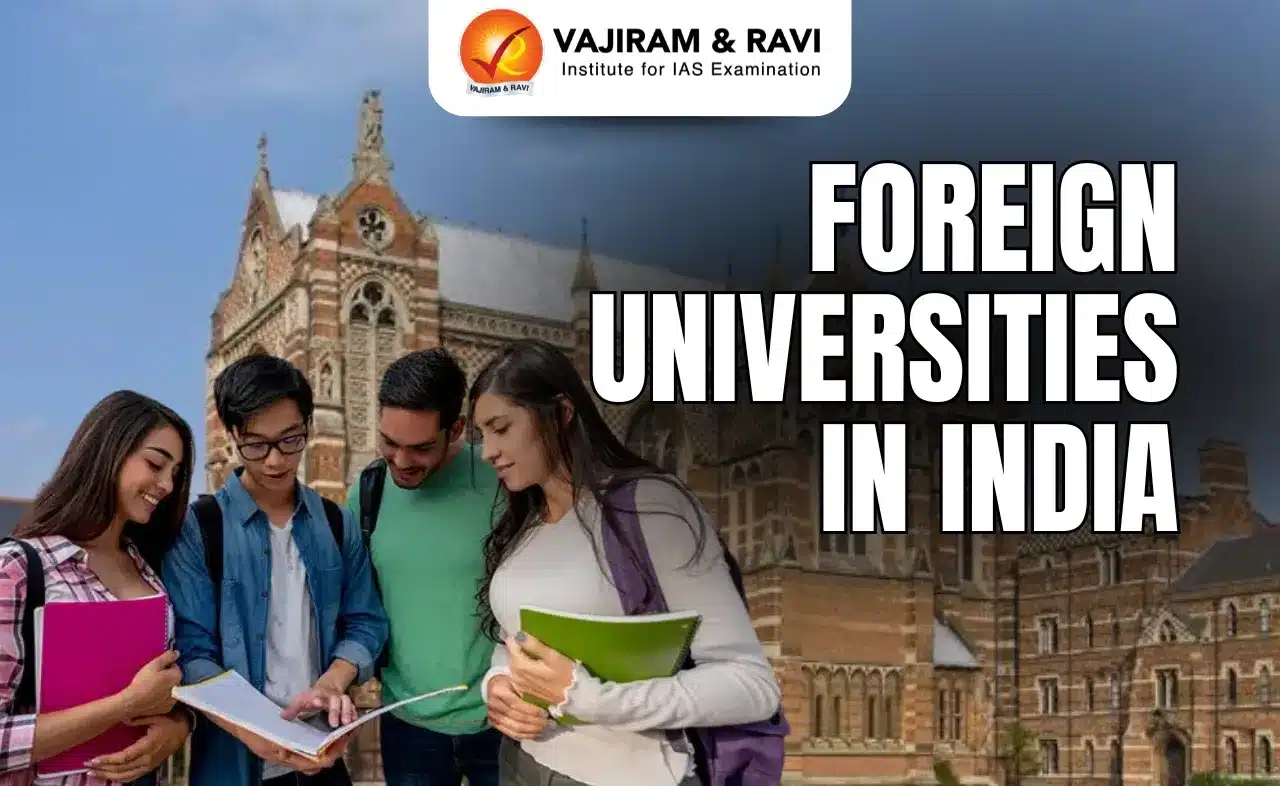What’s in today’s article?
- Why in News?
- About Resource Efficiency Circular Economy Industry Coalition (RECEIC)
- What is Circular Economy?
- What are the Benefits of the Circular Economy Model?
- News Summary
Why in News?
- The Union Minister of Environment, Forest, and Climate Change, Bhupendra Yadav, launched the Resource Efficiency Circular Economy Industry Coalition (RECEIC).
- As many as 39 multinational corporations (MNCs) from various sectors came together to pledge to adopt resource efficiency and circular economy principles.
About Resource Efficiency Circular Economy Industry Coalition (RECEIC)
- The mission of RECEIC is to –
- facilitate and foster greater company-to-company collaboration,
- build advanced capabilities across sectors and value chains,
- bring learnings from diverse and global experiences of the coalition members,
- unlock on-ground private sector action to enhance resource efficiency and
- accelerate circular economy transition.
- The coalition is structured around the three guiding pillars of partnerships for impact, technology cooperation and finance for scale.
- The RECEIC will also aim to contribute towards progress on key global goals and priorities set by the G20 and other international fora.
- The Coalition, conceptualised by India’s G20 Presidency, is envisaged to be industry driven and a self-sustaining initiative continuing to function even beyond India’s G20 Presidency.
What is Circular Economy?
- The circular economy is one of the models of production and consumption.
- Circular economy model involves sharing, leasing, reusing, repairing, refurbishing and recycling existing materials and products as long as possible.
- In this way, the life cycle of products is extended. In practice, it implies reducing waste to a minimum.
- When a product reaches the end of its life, its materials are kept within the economy wherever possible thanks to recycling.
- These can be productively used again and again, thereby creating further value.
- On the other hand, Linear Economy model is based on a take-make-consume-throw away pattern.
- This model relies on large quantities of cheap, easily accessible materials and energy.
What are the Benefits of the Circular Economy Model?
- To Protect the Environment –
- Reusing and recycling products would slow down the use of natural resources, reduce landscape and habitat disruption and help to limit biodiversity loss.
- Another benefit from the circular economy is a reduction in total annual greenhouse gas emissions.
- A shift to more reliable products that can be reused, upgraded and repaired would reduce the amount of waste.
- Reduce Raw Material Dependence –
- The world’s population is growing and with it the demand for raw materials. However, the supply of crucial raw materials is limited.
- Finite supplies also means India is dependent on other countries for to meet the need of raw materials.
- Recycling raw materials mitigates the risks associated with supply, such as price volatility, availability and import dependency.
- Create Jobs & Save Consumers Money –
- Moving towards a more circular economy could increase competitiveness, stimulate innovation, boost economic growth and create jobs.
- Redesigning materials and products for circular use would also boost innovation across different sectors of the economy.
- Consumers will be provided with more durable and innovative products that will increase the quality of life and save them money in the long term.
- The transition to a circular economy could result in an additional US$ 4.5 trillion in global economic output by 2030.
- Benefits for India’s Economy –
- By 2030, India is expected to be the world’s third-largest economy, accounting for approximately 8.5% of the global GDP.
- The circular economy has the potential to fuel India’s growth while also providing significant environmental benefits, making a sustainable and resilient framework.
- The recycled Polyethylene Terephthalate (PET) plastic industry in India is estimated to be worth around US$ 400-550 million.
- In India, PET is recycled at a rate of 90%, which is higher than in Japan (72%), Europe (48%), and the United States (31%).
- Thus, there are enormous opportunities for a circular economy in India.
News Summary
- At the Environment and Climate Ministers’ meeting in Chennai, Union Minister Bhupendra Yadav launched the Resource Efficiency Circular Economy Industry Coalition (RECEIC).
- The minister in his speech emphasised that the Coalition would play a pivotal role in promoting alliances, encouraging technological cooperation and knowledge transfer, fostering innovation, and facilitating the exchange of insights to enhance access to finance.
- As many as 39 multinational corporations (MNCs) from various sectors came together to pledge to adopt resource efficiency and circular economy principles.
- Some of the founding members include companies like Maruti Suzuki, Coca Cola, Unilever, Nestle, Aditya Birla Group, Tata Power and Mahindra & Mahindra.
- Union Minster Bhupendra Yadav acknowledged the commitment of the 39 founding members of RECEIC for stepping forward to join this coalition.
Q) What is Keynesian Economics?
Keynesian economics named after British economist John Maynard Keynes) are the various macroeconomic theories and models of how aggregate demand (total spending in the economy) strongly influences economic output and inflation.
Q) What is the difference between Macro and Micro Economics?
Microeconomics is the study of economics at an individual, group, or company level. Whereas, macroeconomics is the study of a national economy as a whole. Microeconomics focuses on issues that affect individuals and companies.
Source: 39 MNCs come together for circular economy coalition I PIB I IBEF
Last updated on June, 2025
→ UPSC Notification 2025 was released on 22nd January 2025.
→ UPSC Prelims Result 2025 is out now for the CSE held on 25 May 2025.
→ UPSC Prelims Question Paper 2025 and Unofficial Prelims Answer Key 2025 are available now.
→ UPSC Calendar 2026 is released on 15th May, 2025.
→ The UPSC Vacancy 2025 were released 1129, out of which 979 were for UPSC CSE and remaining 150 are for UPSC IFoS.
→ UPSC Mains 2025 will be conducted on 22nd August 2025.
→ UPSC Prelims 2026 will be conducted on 24th May, 2026 & UPSC Mains 2026 will be conducted on 21st August 2026.
→ The UPSC Selection Process is of 3 stages-Prelims, Mains and Interview.
→ UPSC Result 2024 is released with latest UPSC Marksheet 2024. Check Now!
→ UPSC Toppers List 2024 is released now. Shakti Dubey is UPSC AIR 1 2024 Topper.
→ Also check Best IAS Coaching in Delhi
























